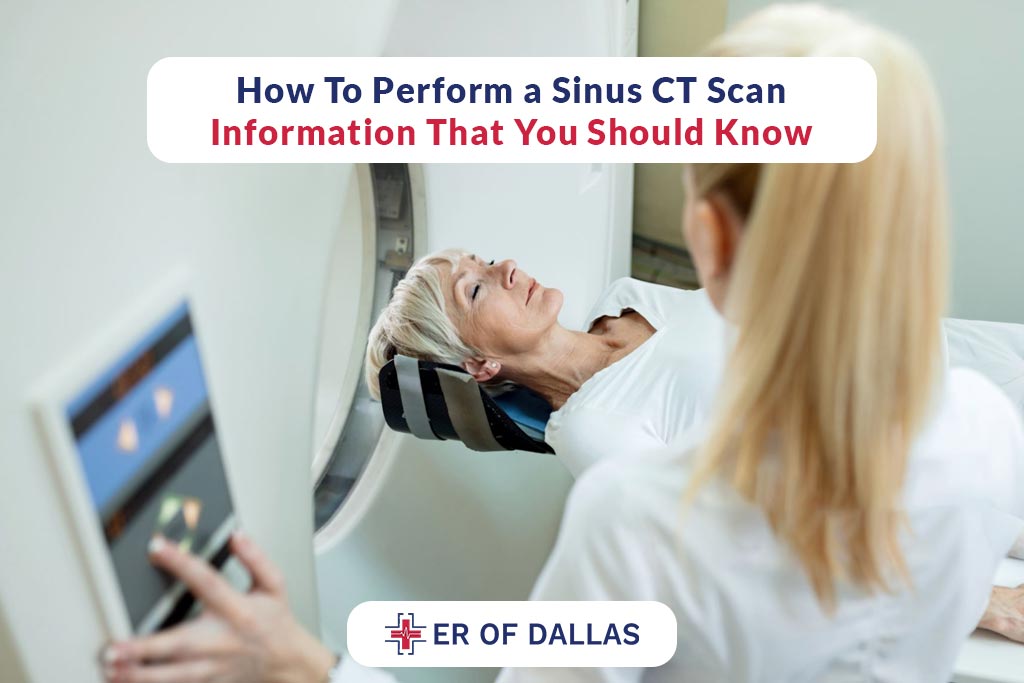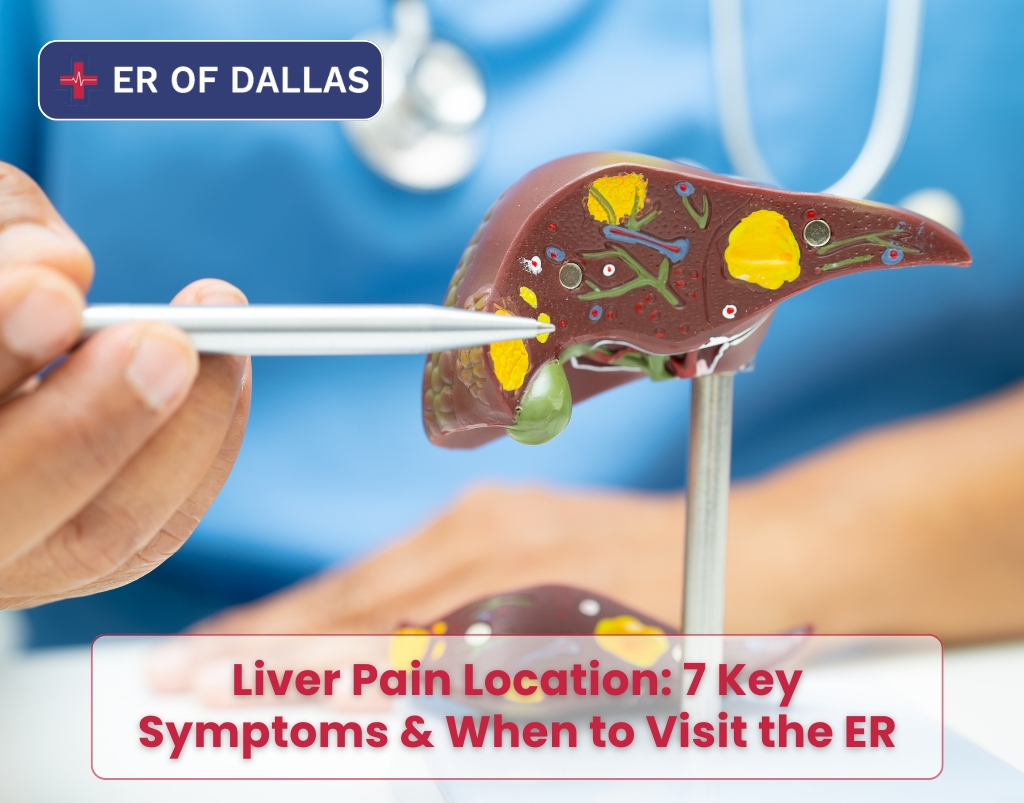Obtaining a good image of the interior of your nasal passages is crucial for a precise diagnosis and successful treatment of sinus problems. A sinus CT (computed tomography) scan can help with that. You can breathe more easily and clearly by using this medical imaging approach.
Having to take antibiotics each time you get a sinus infection might be annoying. If at all possible, it could be significantly more advantageous to locate the source of the problem and have it remedied.
Like me, other sinus experts frequently advise getting a sinus CT scan to diagnose the issue and aid in choosing the best course of action. CT scans are a minimally invasive method that can assist physicians in accurately diagnosing sinus and nasal problems.
To find out what to look for in a sinus CT scan, continue reading.
What is a Sinus CT Scan?
A CT or CAT scan, as they are more widely called, is a type of diagnostic medical imaging exam. It generates several images or photos of the interior of the body, just like a regular X-ray.
Images from a CT scan can be resized in different planes. Even three-dimensional images can be produced by it. Your doctor can review these images on a computer monitor, print them on film or via a 3D printer, or transfer them to a CD or DVD.
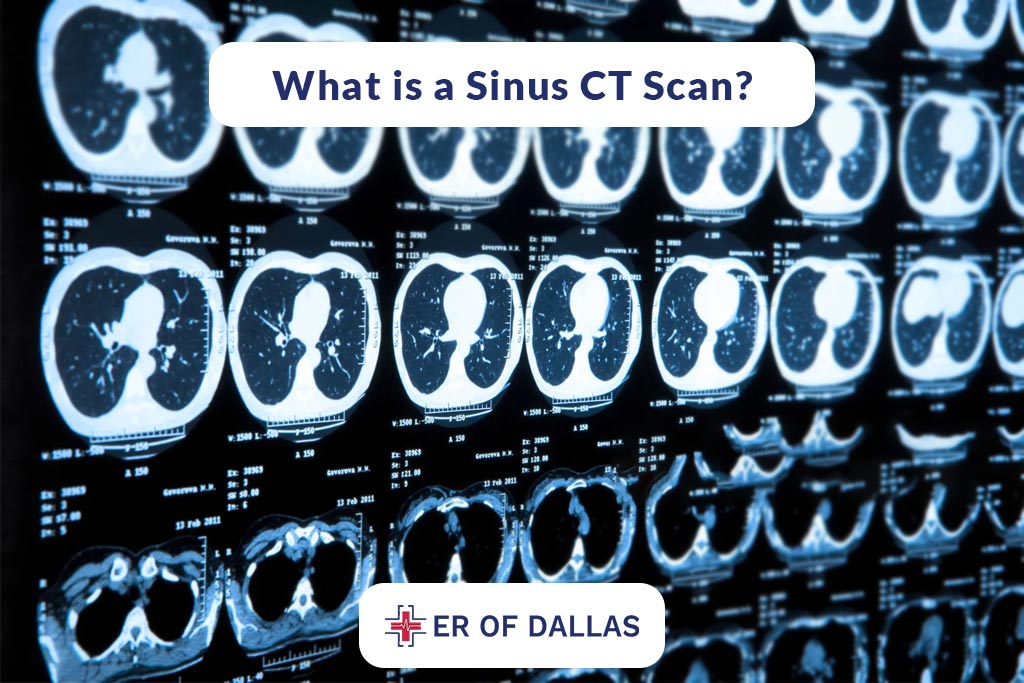
Compared to traditional X-rays, CT images of internal organs, bones, soft tissue, and blood vessels offer more detail. This particularly applies to blood vessels and delicate tissues. Images from a CT scan of the face reveal the patient’s paranasal sinus canals as well. The nasal cavity, a network of air channels that connects the nose and the back of the throat, is surrounded by the paranasal sinuses, which are hollow, air-filled spaces inside the face’s bones. Each of the four pairs of sinuses has a tiny aperture connecting it to the nasal cavity.
What Does a CT Scan of Sinuses Reveal?
Tumors in the sinus cavities can be identified and diagnosed via a CT scan of the sinuses. In particular:
Sinus inflammation: An X-ray is thought to be a less accurate way to diagnose sinusitis than a CT scan; The sphenoid sinus has been affected by cancer: a CT scan of the nasal sinuses shows that the sphenoid sinus’s anterior wall is completely obliterated; The maxillary sinus has been invaded by cancer, as evidenced by the CT scan; the dura mater and brain have also been affected by the malignancy. The portions of the sieve that the tumor has eroded and damaged can be seen plainly on a CT scan.
When Should You Have a CT Scan of Your Sinuses?
When a patient exhibits any of the following symptoms, a CT scan of the sinuses aids in the precise diagnosis of sinusitis:
Prolonged headache (intense, intense pain) and persistent sinus pain in the forehead, cheeks, or temples; posterior sinus discomfort in the back of the neck and the crown of the head; when there is a possibility that the pain will be followed by several additional symptoms, such a low-grade fever, chills, exhaustion, sore throat, nasal congestion, runny nose mucus, yellow-green color, cough with phlegm, etc. When a patient presents with any of the following symptoms, a CT scan of the nasal sinuses aids in the precise diagnosis of face sinus cancer:
First stage: Superinfection with a runny nose, along with progressively worsening congestion on one side of the nose. Blood or pus. Sometimes a little headache occurs; if painkillers are taken, the headache will go away entirely. X-rays currently only display a blurry image and do not reveal any broken bones; Stage 2: Headache or pain in the cheekbones and eye sockets that gets worse with time. numbness in the tumor-affected part of the face or the region beneath the orbit. The patient additionally experienced a clogged nose, a runny nose with blood, and an unpleasant stench because of a superinfection of the sinus area.
How is The Procedure Commonly Used?
The main purpose of sinus CT imaging is
- Aid in the sinusitis diagnosis.
- Examine sinuses with thicker sinus membranes or those that are filled with fluid.
- Identify any inflammatory disorders that may be present.
- Give further details regarding malignancies of the sinuses and nasal cavity.
- Define anatomy to arrange the surgical procedure.
What Should I Do to Prepare for a Sinus CT Scan?
While getting ready for a sinus CT scan isn’t the same as getting ready for other kinds of scans, it should be easy if you follow your doctor’s prep guidelines! You may receive the care you require and ensure a seamless scan experience by following these tips.
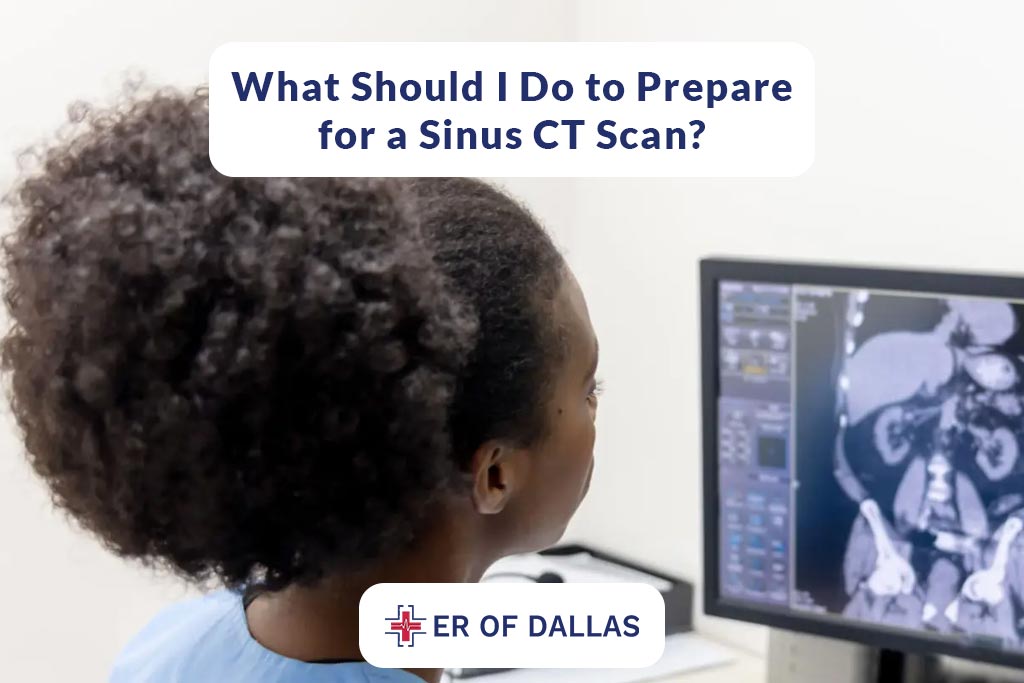
Your doctor may have ordered this scan because they are worried about swelling or obstructions in your sinuses, which are hollow areas in the face and skull bones that are particularly near nasal passages. See your doctor right away about a sinus CT scan if you are experiencing excruciating sinus pressure or pain.
Your doctor can observe those sinus gaps and determine what might be causing your pain via a CT scan. Since a CT scan takes less time and provides more precise images of your sinus passages than an MRI, your doctor is probably going to advise one over the other.
Before The Sinus CT Scan
Getting a good night’s sleep the night before your sinus CT scan will help you get ready for the scan. To make sure there are no issues with the contrast solution, your doctor may arrange for a blood test for you to have before your sinus CT scan with contrast. You can arrive early for your appointment, and one of our ER of Dallas technicians will take care of the blood test if you don’t have time to finish it before the assessment.
You’ll probably receive advice from your doctor regarding how long to fast before your scan. Try to avoid eating for four hours before your visit if you are having a sinus CT scan with contrast. To avoid influencing the results of your scan, your doctor may even ask that you refrain from brushing your teeth the night before.
If at all possible, limit your intake to clear liquids before those four hours. Other than this, on the day of your scan, don’t do anything different from your regular schedule. Our goal is for your results to closely resemble your typical way of life. Try to consume whole things, such as fruits or vegetables, if you are going to be eating anything the day of your scan. Avoid eating heavy, oily foods that could take a long time for your body to digest and interfere with normal bodily functions.
In case your technician has any updates, or if you have any queries, try to come to your appointment ten to fifteen minutes early. Wearing jewelry or hair clips to your visit is not recommended. You should not wear any metal on your head, such as wigs, hearing aids, jewelry, or other accessories, since the scan will be of your face and head.
Avoid wearing deodorant, lotions, creams, or cosmetics since they may contain tiny metal particles that could interfere negatively with the equipment. Come to your appointment with loose-fitting, comfortable clothing. Should your attire contain excessive amounts of metal, you can be requested to change into a hospital gown.
What Happened During a Sinus CT Scan
The scan itself will take about fifteen minutes. The CT machine will rotate around your head as you lie on your stomach or back on a metal bed. Your technician will inject the contrast dye before your scan if you are getting a sinus CT scan with contrast. This contrast solution aids in producing outcomes that distinguish between areas and structures more clearly.
The CT scanner will revolve an X-ray beam around your head and face while you undergo the scan. You may choose to keep your eyes open, however, since this scan is off your face, closing them may make you feel less constricted and more at ease. Although a CT scanner is primarily open, during this specific treatment it will be close to your face. You must remain still during a sinus CT scan to obtain the best possible images.
You can go home after your CT scan. After returning home from a sinus CT scan with contrast, sip six to eight cups of water. Your sinus spaces, not your eyes, teeth, ears, or brain, are visible on a sinus CT scan. A CT scan of the head would be required to obtain images of those structures. Your sinuses’ surrounding black areas would be visible in abnormal sinus CT results. CT scans are the most accurate medical scans available for diagnosing sinus problems. Your doctor will receive the findings of your sinus CT scan in less than a day. Within a week, your doctor will give you a call to set up a time to talk about your findings and possible course of action.
Can You Tell Me How the Equipment Looks?
A huge, donut-shaped device with a short tunnel in the center is the typical CT scanner. A small table that glides in and out of this little tunnel will be where you lie. The electronic X-ray detectors and x-ray tube rotate around you in a ring known as a gantry, opposite each other. In a different control room sits the computer workstation used to process the imaging data. Here, the technologist runs the scanner and keeps a close eye on your examination. Using a speaker and microphone, the techie will be able to communicate with you and hear you.
Check Your Sinus CT Scan for These 5 Findings

Thickened Mucosa
Your sinuses’ inflammatory response is manifested as mucosal thickening. Allergy responses, infections, or nasal polyps can cause it. Additionally, it might opacify your sinuses and result in more issues. Consequently, the diagnosis of mucous thickening and opacification requires a sinus CT scan.
Obstruction of the Ostiomeatal Complex
The frontal sinus, anterior ethmoid air cells, and maxillary sinus are connected to the middle meatus by the ostiomeatal complex (OMC), a canal that facilitates mucociliary drainage and airflow.
Ostiomeatal complex blockage, or clogged sinus drainage channels, is a possible consequence of chronic rhinosinusitis. Symptoms like nasal congestion are caused by OMC blockage, which may require sinus surgery to treat.
Deviated Septum
Your nose’s nasal cavity is split in half by the cartilage and bone of the nasal septum. A deviated nasal septum tilts to one side of the nasal cavity or is off-center.
If you have a small deviated septum, you might not have any symptoms at all. But if the deviation of the septum is extreme, you might have congestion, pain, and trouble breathing. In certain situations, surgery might be necessary to fix it.
Thickening of the Bones
Prolonged inflammation may cause the sinus walls to become progressively thicker with bone. The sinus routes may shorten as a result of this reactive process, indicating a need for intervention.
By investigating the underlying cause of sinusitis, you can stop it from coming back again and time again. Make an appointment if you’d like additional information about your sinusitis and your treatment choices.
Nasal Polyps, Mucous Retention Cysts, and Mucoceles
The sinuses and nose can contain a variety of masses. Some may cause recurrent sinus difficulties, while others may be benign and not cause complications. Fluid-filled benign cysts called mucous retention cysts are frequently located in the maxillary sinus.
Mucoceles are thick, liquid-filled, walled-off sinus cells that can cause sinus headaches and ocular compression, among other problems. Using extended endoscopic sinus surgery techniques, which minimize complications and reduce the chance of recurrence, I typically treat mucoceles.
Noncancerous growths called nasal polyps resemble water-filled growths and usually do not hurt. They may be the primary cause of recurrent sinus issues since they are the outcome of sinus inflammation. Nasal polyps need to be managed carefully, and frequently with a combination of medication and surgical treatments.
What is the CT Scan of Sinuses Cost?
A PNS CT scan may cost between 300$ and 7850$. The diagnostic center and the city determine how much the price varies. There is now a 50% discount available at Ganesh Diagnostic and Imaging Center (GDIC) on all CT scan types, including NCCT, CECT, HRCT, and PET-CT.
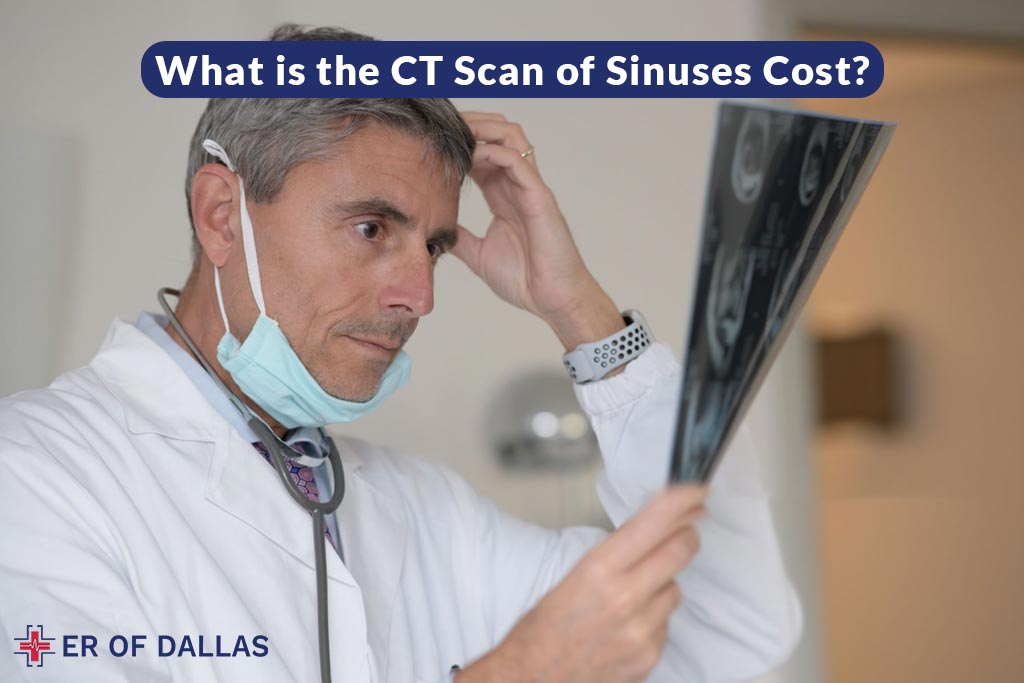
How Long Does a CT Scan of Sinuses Take?
You might be kept still during the treatment with pillows and straps. Earrings and jewelry removal may be requested of you. About 30 seconds should pass during the scan itself. It should take 15 minutes to complete the operation.
What is the CT Scan of Sinuses Infection
CT scans and X-rays can be used to diagnose sinus issues. Gray regions may indicate thickness brought on by persistent sinusitis, whereas black sinuses are in good health and do not have a mucosal layer. Severe sinus infections might also manifest as eyelid swelling and redness.
CT Scan of Sinuses Without Contrast
This exam does not generally require contrast material; but, in some cases, your doctor may order that contrast material be administered. If you have a known allergy to contrast material, your doctor may prescribe drugs to lessen the likelihood of an adverse reaction.
What are the Benefits and Risks of Sinus CT Scan?
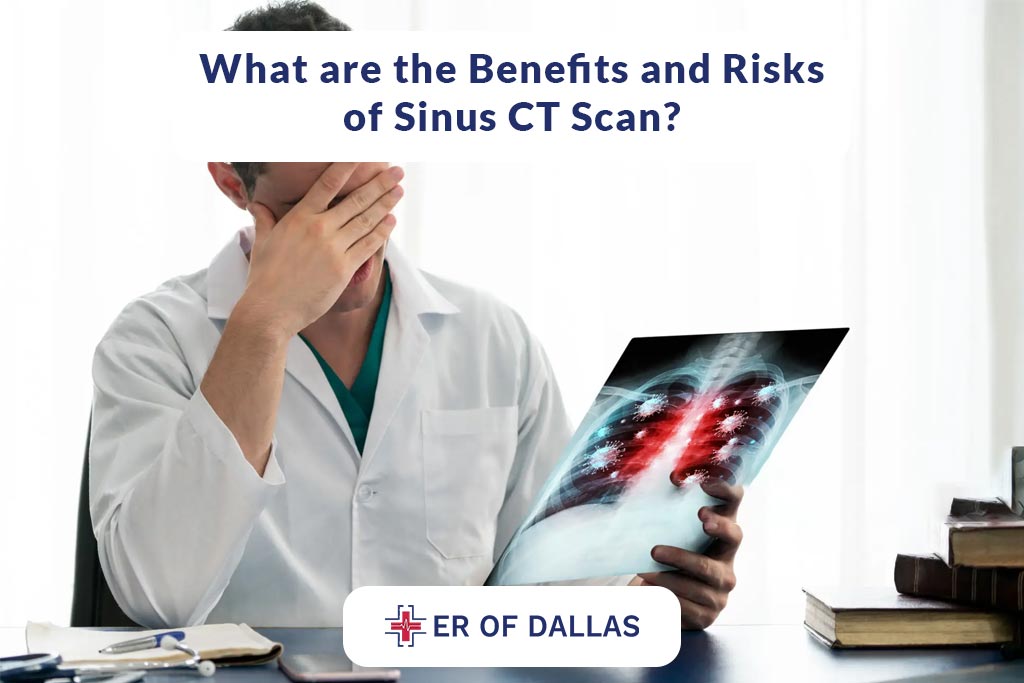
Benefits:
- One of the safest methods for researching the sinuses is a CT scan.
- The most trustworthy imaging method for figuring out whether the sinuses are clogged is CT. For sinusitis, it is the most effective imaging modality.
- Surgery can be planned with maximum safety and efficacy using CT of the sinuses.
- Nowadays, CT sinusography is very common and takes very little time, especially when compared to magnetic resonance imaging (MRI).
- It has been demonstrated that CT is an affordable imaging method for a variety of clinical issues.
- Compared to MRI, CT is less sensitive to patient movement.
- An implanted medical device of any kind won’t stop you from getting a CT scan, unlike an MRI.
- Because CT imaging offers real-time imaging, needle biopsies, and needle aspirations can be guided with its help. This is especially true for operations on the bones, abdomen, pelvis, and lungs.
Risks:
- The risk of developing cancer from prolonged radiation exposure is always present. Nonetheless, the advantages of a precise diagnosis greatly surpass the dangers associated with CT scanning.
- This technique involves varying amounts of radiation. For additional information on radiation exposure, see the Radiation Exposure in X-Ray and CT Exams page.
- If a woman suspects she may be pregnant, she should always disclose this information to her physician and any CT or x-ray technicians. For additional information regarding X-rays during pregnancy, visit the Safety in X-ray, Interventional Radiology, and Nuclear Medicine Procedures page.
- Manufacturers of IV contrast advise women not to breastfeed their children for 24 to 48 hours following the administration of contrast material. Nonetheless, research indicates that the baby absorbs remarkably little contrast when nursing, according to the most recent American College of Radiology (ACR) Manual on Contrast Media. Please refer to the ACR Manual on Contrast Media (opens in a new tab) and its references for more details.
CT of the Sinuses Has Limitations, What Are They?
The first test that is typically requested when a sinus tumor is suspected is CT. Magnetic resonance imaging (MRI) may be useful if more information is required to assess the tumor’s soft tissue extent.
What Does a Normal CT Scan of Sinus?
A particularly huge individual might not fit through the entrance of a traditional CT scanner. Or they might weigh more than the moving table’s weight limit, which is typically 450 pounds.
Keep in mind that the dark area on the CT scan represents the air that normally fills the sinuses. Since white bones delineate the sinus, “black is good and white is good.” In addition, the majority of structures ought to be straight, symmetrical, and free of interstructural contact.
What Does Abnormal CT Scan of Sinus?
The scan results will indicate any dark patches surrounding your sinuses if they are not healthy. Additionally, the scan may reveal sinus cysts or nasal polyps. Surgery is not always necessary to cure nasal polyps.
Wrap it Up
If you are looking for a CT Scan Service then ER of Dallas is a good option Because of its handy location in Dallas, Texas, our CT scan facility is easily accessible to locals. Since closeness is crucial in emergencies, we strive to offer timely imaging services close to your residence or place of business.

